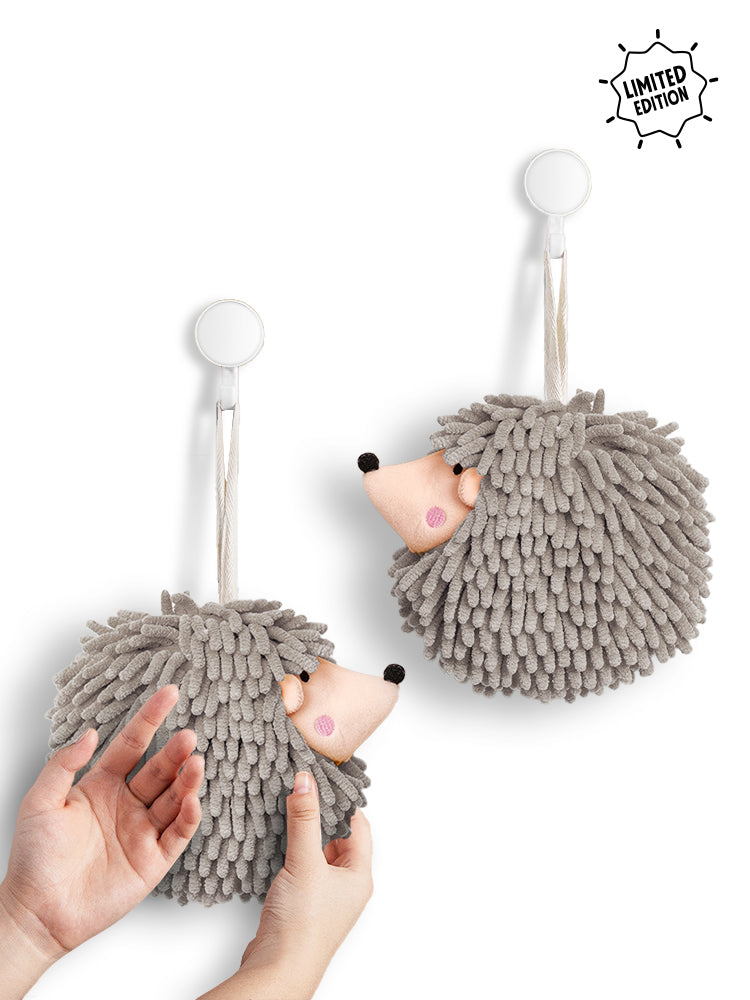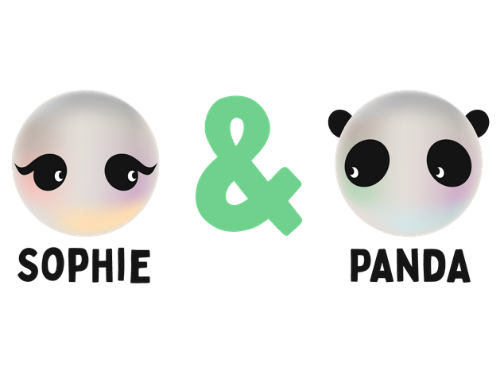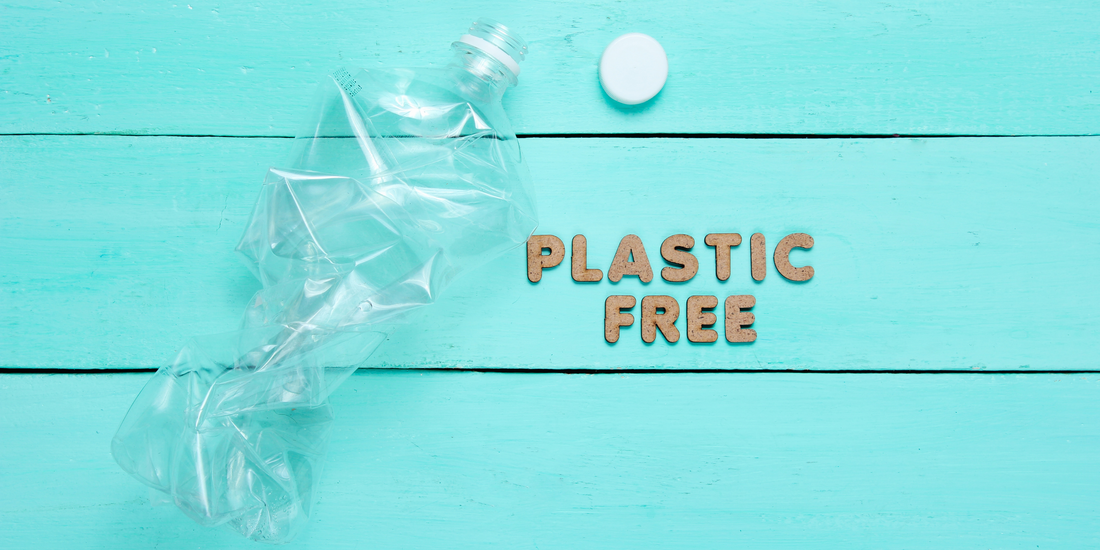
I've been trying and failing to cut single-use plastic out of my life for several months. To be fair, I often wasn't trying that hard. I bought a reusable coffee mug and remembered to bring it with me, well, most of the time. I never used those plastic produce bags at the grocery store (I don't understand the point of them anyway), but I was buying a lot of berries in plastic clamshells. And I patted myself on the back for ordering compostable trash bags—before realizing that, like many products labeled "compostable," those bags need to go to a special high-heat, industrial composting facility to actually degrade. I was just sending expensive, prettily green-tinted plastic to languish in a landfill for centuries.
When Plastic Free July rolled around, I vowed to ramp up my efforts. This was my first year participating, but the environmental campaign has existed since 2011; Australian activist Rebecca Prince-Ruiz started it to call attention to the gargantuan amount of plastic heaping up in our homes and workplaces (and landfills, rivers, and oceans). Despite the name, the campaign doesn't insist that people eliminate plastic entirely but simply encourages us to reduce our usage or swap out a few things. The hope is that if a lot of us do a little bit, we'll collectively tackle the plastic crisis.
Still, I was feeling guilty about doing too little for too long, so I went into the month in perfectionist mode. It was fine if everyone else took small steps, I told myself, but I was going to full-on banish the polymer beast from my home. My mission is…not working out as I hoped. While some swaps are easy, many sources of plastic are almost impossible to avoid—one in particular. Here's how I'm minimizing it the best I can.
What's So Bad About Plastic, Anyway?
First, it's worth explaining why I care so much about reducing my plastic usage. Plastic is a really useful material—it's lightweight, durable, versatile, and relatively inexpensive—but the sheer volume of it on our planet is wreaking environmental havoc.
Every year, the world produces around 400 million metric tons of plastic and generates about 280 million metric tons of plastic waste. For context, the Great Wall of China, among the heaviest man-made objects on earth, is a mere 50 million tons, according to one estimate.
Only about 9% of the plastic ever made has been recycled—the bulk of it ends up in landfills or simply strewn about the planet, most notoriously in the oceans. We've all heard of the Great Pacific Garbage Patch, consisting mainly of plastic, but the stuff is everywhere in our waterways; 11 million metric tons gets dumped into them every year, and it's deadly to marine life.
It may be harmful to human life too. Once made, plastic never really goes away; over the years, it breaks down into smaller and smaller pieces, called microplastics, that drift freely around the world. Microplastics also shed off plastic products in the dishwasher and washing machine. We can't always see them, but we breathe them in, absorb them through our skin, and eat them. Scientists are still exploring what kind of damage this may be doing to our bodies, but early research links microplastics to cancer, heart attacks, reproductive problems, and other issues.
Finally—and crucially—plastic contributes to climate change because almost all of it is made from fossil fuels, which are the primary source of human-released greenhouse gases. (Only about 1% of plastic products, like my compostable trash bags, are made from plant-based material. Known as bioplastic, it's more eco-friendly than traditional plastic but can still turn into microplastics.)
So, yeah: Plastic is a problem.
The Easy Parts of Going Plastic-Free
The good news is that a lot of people are springing into action to address the problem.
Believe it or not, before the 1950s, single-use plastic wasn't even a thing. People relied on materials like glass, metal, and paper—all of which are still very useful and, unlike plastic, can be easily reused or recycled. Now that consumers are demanding sustainable goods, a lot of companies are taking advantage of these trusty, old-timey materials. As someone who likes to feel rustic and quaint, I'm here for it.
My new favorite places to shop are the refillery stores near my town in New Jersey. At these increasingly popular retailers popping up all over the country, you bring in your own reusable containers to fill with dish soap, hand soap, dry goods, household cleaners, etc. They also sell other items in plastic-free packaging, and some of the stores will deliver to your home. (Find a refillery near you here.) I avoided them in the past because I grew up in the '90s and am deeply embedded in convenience culture; it seemed like too much work to bring in my own jars. But it's actually kind of fun, you get to support a small local business, you're investing in a green future, and you feel like a good person, which is always nice. If you don't have any refilleries nearby or they're just not for you, check out one of the many online retailers that focus on plastic-free and refillable items.
When I set my mind to it, these plastic swaps came easily:
- Using toothpaste tablets and bamboo floss in refillable glass containers (if you're a butterfingers like me, hold on tight when dealing with glass; I learned that lesson the hard way)
- Putting food leftovers in glass containers, beeswax wrap, or aluminum foil instead of cling wrap
- Buying cat litter in cardboard boxes instead of plastic jugs
- Refilling dish detergent, hand soap, and body wash in reusable glass containers
- Washing my hair with bar shampoo and conditioner
- Replacing plastic razors with a stainless-steel safety razor
- Buying recycled-bamboo toilet paper that's not packaged in plastic
- Buying laundry detergent in a recycled-aluminum container (I used to be very into laundry sheets as an eco-friendly alternative but, alas, I learned these sheets are made of plastic)
- Using stainless-steel and cast-iron pans instead of nonstick ones (yes, also plastic)
- Not buying clothes made with polyester or rayon (yep, plastic)
- Actually remembering to bring my reusable coffee mug and water bottle with me
The Infuriatingly Difficult Part of Going Plastic-Free and How to Deal With It
So with all these swaps, why do I find myself discarding so much single-use plastic?
It's the food packaging. Wowza, it's the food packaging. I mean…have you ever been to a grocery store? Once you're on the lookout for plastic, you notice that you're surrounded by it in every aisle: plastic bread bags, plastic chip bags, plastic milk cartons, plastic bags of spinach, plastic hummus containers, plastic tofu containers, individual cucumbers wrapped in plastic for some reason, cereal in a plastic bag inside the cardboard box, frozen waffles in a plastic bag inside the cardboard box, granola bars in plastic wrappers inside the cardboard box, tea bags in plastic wrappers inside the cardboard box, plastic bags of coffee, plastic ice cream containers, plastic yogurt containers, plastic ketchup bottles, plastic peanut butter jars, anything premade, my old friends the plastic clamshells of berries, and so much else.
I can't leave a grocery store without filling my reusable totes with single-use plastic.
I've come up with three strategies to reduce my plastic waste when food shopping, though I'm nowhere close to eliminating it.
Buy less, and shop more mindfully. Whenever possible, I get the version of an item that's not in plastic. I go for the whole cantaloupe and watermelon instead of the prechopped kind (they last longer, and I'm improving my knife skills). I skip berries and get loose fruit, like apples and peaches, I buy coffee, flour, and sugar packaged in paper or cardboard. I don't buy premade stuff, and I forgo what used to be the foundation of my diet: microwavable frozen meals (too risky). As a side benefit of shopping more intentionally, I'm not buying a lot of food I don't need, and I'm eating more nutritiously.
Go to farmers markets. It's not always easy for me to trek to a farmers market, but I've been making the effort because this is where I can find plastic-free produce packaging—sometimes, anyway. At a small one I visited early in the month, I was dismayed to see strawberries and blueberries, among other things, in plastic boxes and bags. I almost turned around and went home, but I then remembered I had small cloth produce bags with me. At the checkout, I explained that I wanted to transfer the berries into my bags (at last—I discovered a use for produce bags!) and hand back the plastic boxes for them to reuse. I was weirdly nervous, but they were totally cool with it. This is not something I could have done at a grocery store!
Recycle better. Recycling plastic is a pain: You have to squint to find the tiny number on the package (called the resin identification code, it indicates what type of plastic you're dealing with), and then you have to know whether that type of plastic is allowed in your recycling bin. My town accepts #1, #2, and #5, and the only reason I know this is that I spent 10 minutes looking it up. Unfortunately, the vast majority of the single-use plastic I amass is flexible plastic, like wrappers and bags, usually classified as #4. None of it can go into my curbside recycling bin. Instead of just throwing it out, I'm now stashing it all in a bag to dispose of responsibly. Luckily, my grocery store has drop-off bins for flexible plastic, and I'm considering investing in my own zero-waste box from TerraCycle, a company that collects and recycles flexible plastic and lots of other items. Still, because of the nature of plastic, it can usually only be recycled once or twice before eventually ending up as trash, so recycling is not the silver bullet solution to the plastic problem.
Why It's OK to Be Imperfect
In late June, I attended a webinar with Rebecca Prince-Ruiz, the founder of Plastic Free July, and she warned us not to try to eliminate every last bit of plastic from our lives. "It will just be too overwhelming," she said. This was back when I still thought I could do it all, but now I see the wisdom of her words. Barring the invention of time travel, I'm stuck in the plastic-based modern world.
Because it's not just the food packaging. Almost every object we interact with on a daily basis has plastic in it—cars, light switches, refrigerators, dishwashers, credit cards, medicine bottles, exercise equipment, phones, plumbing systems, even many reusable coffee mugs and water bottles. As for single-use plastic, the world produces 139 million metric tons a year, so some of that will end up in my life however hard I try to avoid it.
Perfectionism gives way to defeatism too easily, and the most important thing is consistency. I've now formed habits I know I can sustain year-round, not just in July. Maybe next Plastic Free July I'll incorporate more small changes and take my efforts a few steps further.
And maybe the world will make some changes too. I'll be eagerly following the Global Plastics Treaty negotiations taking place in August, hoping leaders can come up with a plan to address the issue at a system-wide level.
Source: Brown, J. (2025, July 28). This Is the Trickiest Part of Going Plastic-Free—and How I'm Managing It. Real Simple. https://www.realsimple.com/going-plastic-free-11777731


